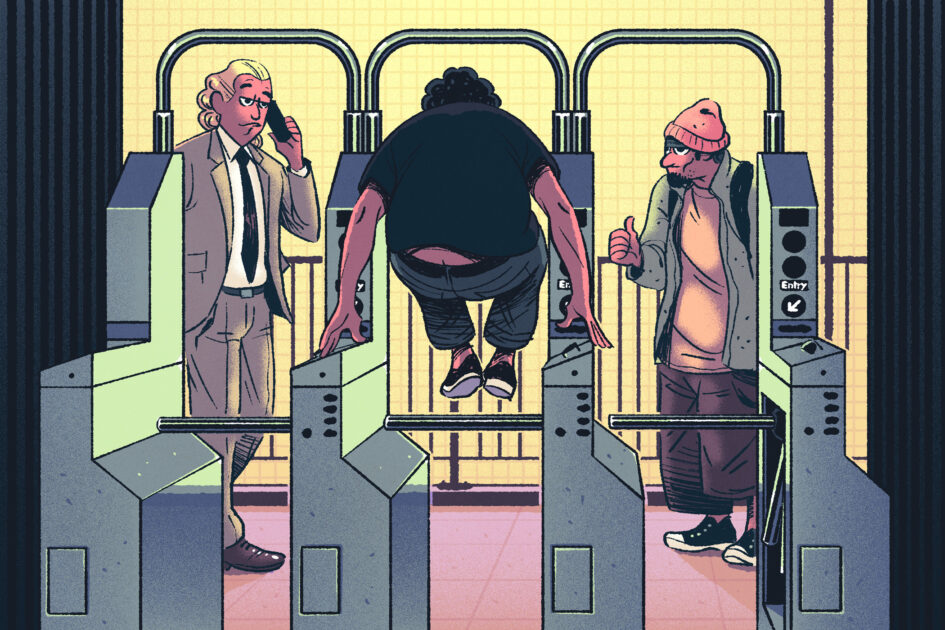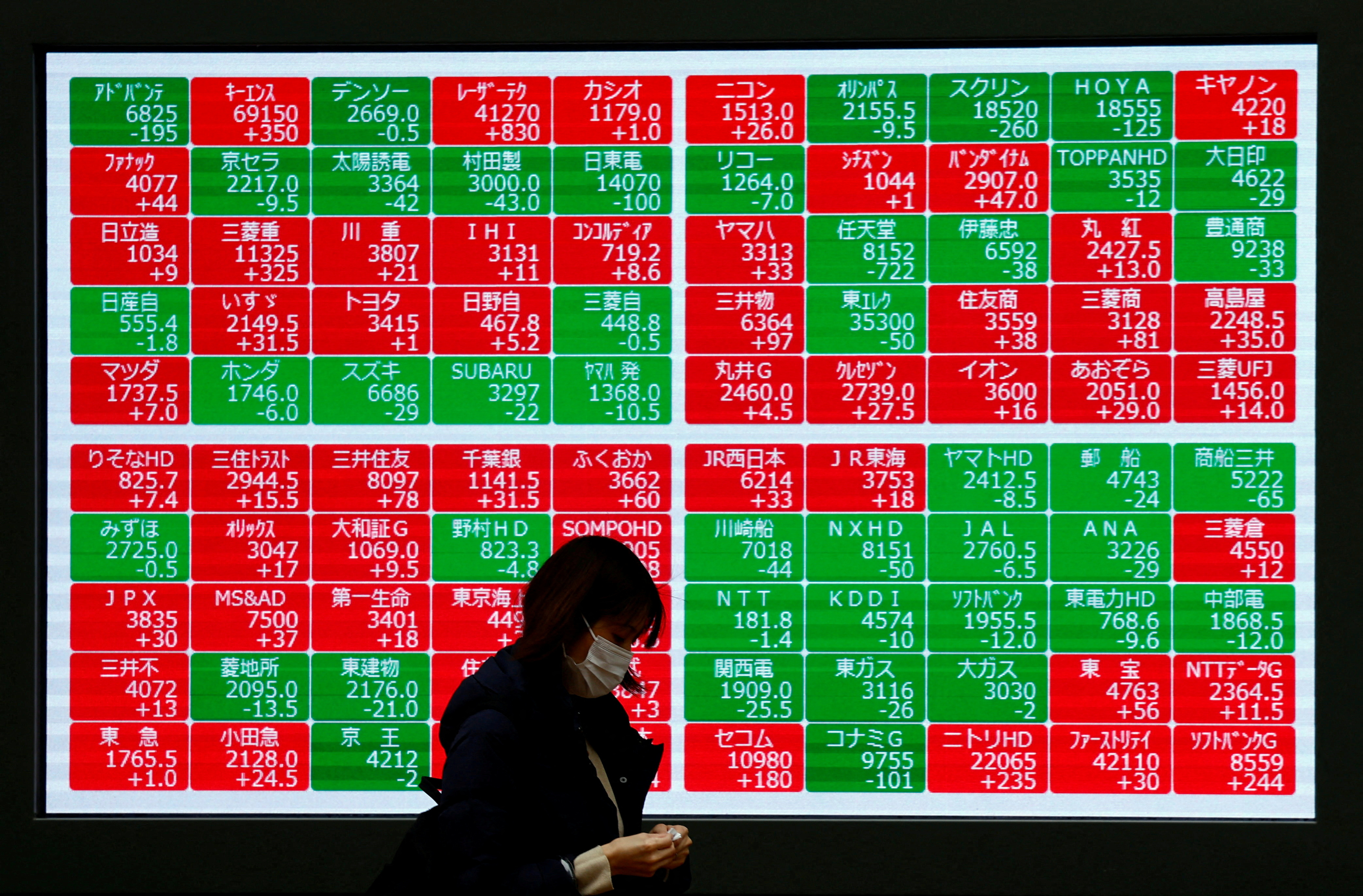
The Impact of Inequality on Ethical Behavior

Sustainable Development Goals (SDGs)
- Goal 3: Good Health and Well-being
- Goal 10: Reduced Inequalities
- Goal 16: Peace, Justice, and Strong Institutions
The consequences of inequality are widespread. Larger gaps between the rich and the poor negatively affect life expectancy, infant mortality, and even happiness for those on the lower end of the economic spectrum. At the societal level, increased inequality hurts economic growth and is associated with higher financial and violent crimes.
According to a new study, inequality even changes how we think about morality: when inequality is high, people are more accepting of unethical behavior.
The Link between Control and Ethical Behavior
The link between the control we feel over our lives and how we judge various ethical lapses has been known for decades. Previous research has shown that those who lack a feeling of control develop less-extreme reactions to unethical behaviors like stealing, cheating, and lying.
But researchers wondered how that finding might extend to inequality. Inequality decreases social mobility (both objectively and subjectively), and it creates feelings of relative deprivation—all of which could lead people to feel less control over their lives. So could high levels of inequality also lead to a society where immoral behavior is more accepted?
To find out, the researchers combined three huge datasets: a database that measured country-level inequality for 196 countries since 1960, a database on economic output and development for 182 countries since 1950, and a survey of more than 125,000 people collected between 1981 and 2014. That survey contained questions regarding participants’ feelings of control, trust in others, perception of the world as competitive, and belief in the possibility of getting rich at the expense of others. Survey participants were also asked to rate the justifiability of certain behaviors, like avoiding fare on public transit, cheating on taxes, and accepting a bribe.
By analyzing the combined dataset, the research team found that indeed those who lived in less-equal societies felt like they had less control and were more accepting of unethical behavior. (To the researchers’ surprise, there was no correlation between how competitive participants perceived the world to be and their feelings about unethical behavior—suggesting that inequality, not merely competitiveness, lent itself to this kind of justification.)
The research team then conducted some experiments themselves to expand on these results. In the first, more than 800 participants were shown images of ladders representing different levels of wealth distribution in society. Participants then rated the acceptability of unethical behaviors. Once again, inequality—this time at the neighborhood level—mattered. People who rated their local area as more unequal were more likely to report a lower sense of control and a greater acceptability of unethical behavior.
When Unethical Behavior is More Acceptable
To further investigate, the researchers created a fictional society called Bimboola. Participants were informed about the income tiers in Bimboola and whether it was highly unequal or not. Participants then selected among essential items available in Bimboola, reinforcing the descriptions of inequality. The results showed that people in a highly unequal society felt a lower sense of control and were more accepting of unethical behaviors from others and themselves.
How Inequality Relates to Social Mobility
The researchers also explored the effect of social mobility on the sense of control and acceptance of unethical behavior. Lower perceived social mobility among participants living in more unequal areas helped explain why inequality reduces one’s sense of control.
Creating a More Equal Society
The research findings have implications for policymakers. To restore a sense of control in communities, programs that reduce economic inequality, such as creating more affordable housing, raising the minimum wage, and implementing a progressive tax system, can be adopted. Training and educational programs that enhance people’s perception of social mobility can also be encouraged.
By making society more equal, we can help people feel more secure and stable in their lives, which would give them more of a sense of control.
SDGs, Targets, and Indicators
| SDGs | Targets | Indicators |
|---|---|---|
| SDG 1: No Poverty | 1.4: By 2030, ensure that all men and women, in particular the poor and the vulnerable, have equal rights to economic resources, as well as access to basic services, ownership, and control over land and other forms of property, inheritance, natural resources, appropriate new technology, and financial services, including microfinance. | No specific indicators mentioned in the article. |
| SDG 3: Good Health and Well-being | 3.2: By 2030, end preventable deaths of newborns and children under 5 years of age, with all countries aiming to reduce neonatal mortality to at least as low as 12 per 1,000 live births and under-5 mortality to at least as low as 25 per 1,000 live births. | No specific indicators mentioned in the article. |
| SDG 8: Decent Work and Economic Growth | 8.5: By 2030, achieve full and productive employment and decent work for all women and men, including for young people and persons with disabilities, and equal pay for work of equal value. | No specific indicators mentioned in the article. |
| SDG 10: Reduced Inequalities | 10.1: By 2030, progressively achieve and sustain income growth of the bottom 40 percent of the population at a rate higher than the national average. | No specific indicators mentioned in the article. |
| SDG 16: Peace, Justice, and Strong Institutions | 16.1: Significantly reduce all forms of violence and related death rates everywhere. | No specific indicators mentioned in the article. |
1. Which SDGs are addressed or connected to the issues highlighted in the article?
- SDG 1: No Poverty
- SDG 3: Good Health and Well-being
- SDG 8: Decent Work and Economic Growth
- SDG 10: Reduced Inequalities
- SDG 16: Peace, Justice, and Strong Institutions
2. What specific targets under those SDGs can be identified based on the article’s content?
- Target 1.4: By 2030, ensure that all men and women, in particular the poor and the vulnerable, have equal rights to economic resources, as well as access to basic services, ownership, and control over land and other forms of property, inheritance, natural resources, appropriate new technology, and financial services, including microfinance.
- Target 3.2: By 2030, end preventable deaths of newborns and children under 5 years of age, with all countries aiming to reduce neonatal mortality to at least as low as 12 per 1,000 live births and under-5 mortality to at least as low as 25 per 1,000 live births.
- Target 8.5: By 2030, achieve full and productive employment and decent work for all women and men, including for young people and persons with disabilities, and equal pay for work of equal value.
- Target 10.1: By 2030, progressively achieve and sustain income growth of the bottom 40 percent of the population at a rate higher than the national average.
- Target 16.1: Significantly reduce all forms of violence and related death rates everywhere.
3. Are there any indicators mentioned or implied in the article that can be used to measure progress towards the identified targets?
No specific indicators are mentioned or implied in the article that can be used to measure progress towards the identified targets.
4. SDGs, Targets, and Indicators
| SDGs | Targets | Indicators |
|---|---|---|
| SDG 1: No Poverty | 1.4: By 2030, ensure that all men and women, in particular the poor and the vulnerable, have equal rights to economic resources, as well as access to basic services, ownership, and control over land and other forms of property, inheritance, natural resources, appropriate new technology, and financial services, including microfinance. | No specific indicators mentioned in the article. |
| SDG 3: Good Health and Well-being | 3.2: By 2030, end preventable deaths of newborns and children under 5 years of age, with all countries aiming to reduce neonatal mortality to at least as low as 12 per 1,000 live births and under-5 mortality to at least as low as 25 per 1,000 live births. | No specific indicators mentioned in the article. |
| SDG 8: Decent Work and Economic Growth | 8.5: By 2030, achieve full and productive employment and decent work for all women and men, including for young people and persons with disabilities, and equal pay for work of equal value. | No specific indicators mentioned in the article. |
| SDG 10: Reduced Inequalities | 10.1: By 2030, progressively achieve and sustain income growth of the bottom 40 percent of the population at a rate higher than the national average. | No specific indicators mentioned in the article. |
| SDG 16: Peace, Justice, and Strong Institutions | 16.1: Significantly reduce all forms of violence and related death rates everywhere. | No specific indicators mentioned in the article. |
Copyright: Dive into this article, curated with care by SDG Investors Inc. Our advanced AI technology searches through vast amounts of data to spotlight how we are all moving forward with the Sustainable Development Goals. While we own the rights to this content, we invite you to share it to help spread knowledge and spark action on the SDGs.
Fuente: insight.kellogg.northwestern.edu

Join us, as fellow seekers of change, on a transformative journey at https://sdgtalks.ai/welcome, where you can become a member and actively contribute to shaping a brighter future.






